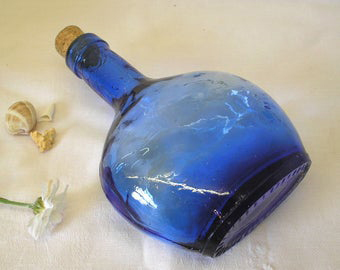October 2, 2019 issue
Authors' & Writers' Corner

Kamil Ali
Incessant whistling-calls from his friends pulled Garven out of a summer holiday slumber. He rushed to the window to silence the raucous, before tiptoeing out of the house, pulling the door shut behind him with a soft thud.
A warm summer breeze caressed his face on his way to the beach. The bright yellow rim of the rising sun on the horizon and cloudless blue skies elevated his mood, with the promise of a great tropical day ahead.

At the end of one ride in, Paco, the youngest member of Garven's group, stood up to avoid the slide back out to the ocean. A glint at the edge of the wave that brought him in, caught his attention. Paco moved closer and bent down to examine the little glass vial, which contained some locks of hair, a clove and rolled piece of a paper. A cork stopper sealed its mouth.
Garven acted as big brother and protector of his younger cousin. His aunt and uncle entrusted him with the responsibility of caretaker for their only son. For this reason, he kept constant vigil, not letting his cousin out of his sight for more than a few seconds.
Paco picked up the vial and turned it in every direction, trying to read the message on the paper. News articles sometimes tell of bottles that have travelled around the world, each recipient adding their name and address to the list on the paper and sending it back to continue its journey toward another faraway shore.
Unable to read the message on the paper, Paco wrestled with the cork but could not remove it from the bottle. A quick glance around the beach failed to locate any tools for dislodging the wedged bottle stopper. Not wanting to miss the fun, he stuffed the vial into the crotch of his swim-shorts.
Garven, neck deep in the water, used rising waves to aid his attempts at jumping up to catch glimpses of Paco over the swells. He used the momentum of the forward moving tide to advance toward Paco, stopping after a few leaps when Paco turned and sprinted across the sand to plunge into the churning tide.
A loud yelp from Paco tightened Garven's throat and flipped his heart. A quick glance at his other friends told him that Paco's cry had gone unnoticed, drowned-out by the roars of the crashing waves. Garven held his breath and focused at the location where Paco had disappeared underwater. After an interminable few seconds, he spotted Paco's head, which triggered the involuntary release of the trapped air from his pressured lungs.
Paco got to his feet and pulled his swim-shorts’ waist to stare inside. His head snapped upward and he stared past Garven with wide, unblinking eyes that bulged out of their sockets. Garven's blood turned cold. He grabbed his throat and shivered. Paco started floating toward him without moving his legs. His lips pulled tight against his teeth and white foam drooled from the corners of his mouth. His body stayed rigid, waist high in the water and made a sudden diversion away from Garven who tried to chase after him without success.
Sleep evaded Garven for a fortnight, too terrified of the nightmares that haunted him and burdened by guilt for failing the family's trust. Everyone combed the beach many times every day, losing hope with each elapsed hour.
On the fifteenth day after his disappearance, news broke of a body that washed up on a coastal beach twenty miles away. Garven rushed to the location ahead of his family members. He had a tough time recognizing Paco's fish-eaten and swollen body. He filled his lungs with the salty air upwind of the rotting corpse and held his breath to approach it. Lifting the waist of Paco's swim-shorts, he saw a deep gash in the pelvic area but saw no sign of the object that Paco had stowed there. Glitter from a glass vial a few yards away caught his attention. The locks of hair with other items in the little bottle prompted him to glance at his cousin's head. A dime-sized bald spot confirmed his worst fears. Paco’s hair was in the test-tube.
Using his fingers, he dug a hole and buried the test tube, taking care not to touch it. In his haste, he had not considered the effects of tidal erosion. One year later, sleep depravation forced Garven's family to admit him to an insane asylum. He spent the next sixty years in isolation away from the other inmates. The padded walls of his cell muffled and contained his piercing screams in the night.
Surging currents unearthed Garven's buried vial on the day he died. He had climbed onto the roof of the three storey building and plunged face first to his death.
The institution's Head Psychiatrist read the life story of Papa Garven one last time before inserting the post-mortem report, which described a bald spot on his head and deep gashes in his pelvic region. Closing the folder, he drew a large question mark on the cover, before filing it away under the 'Mysterious Death' tab. Streaming sunlight sparkled off a vial on his office's windowsill, grabbing his attention. With knotted brows and shaky fingers, he picked it up and wrestled with the cork to pull it out.

By Romeo Kaseram
Zelma (Zee) Inez Edgell was born on October 21, 1940, in Belize City, in what was then British Honduras, now Belize, to father Clive Tucker, and mother Veronica. She attended St Catherine Academy in Belize City, which the University of Minnesota’s publication Voices from the Gap notes “is an all girls’ Catholic School that has focused on the advancement of young girls in Belize with a concentration on faith since 1883”.
Following her early education, Edgell entered the field of journalism, and in 1959 was working at The Daily Gleaner in Jamaica. Edgell continued in this field for many years, and according to Wikipedia, later served as the founding editor of The Reporter, one of the chief newspapers in Belize, which was established in 1967. Wikipedia tells us Edgell continued her studies in the UK at the Polytechnic of Central London, graduating with a diploma in journalism in 1965; much later she pursued graduate studies at the University of the West Indies, finishing in 1990.
She returned to Belize, teaching at her first educational institution, the St Catherine Academy from 1966-1968, where, as Encyclopedia.com tells us, she taught English Language and Literature. Wikipedia tells us after this teaching tenure, Edgell again took the path to journalism, serving as editor at the newly-established The Reporter. However, she returned to teaching yet again in another reprise role at St Catherine Academy, this time during the 1980-1981 school year. Wikipedia tells us following teaching at the academy, Edgell served as the first Director of the Women’s Bureau in the Government of Belize from 1981-1987; later, she served as the government’s Director of the Department of Women’s Affairs.
Writing in Bomb Magazine, writer Bernardine Evaristo notes Edgell to be a “true citizen of the world”, having worked with development organisations and the Peace Corps while living for extended periods in Jamaica, Nigeria, Afghanistan, Bangladesh, and Somalia. Wikipedia tells us Edgell later lectured at what was then known as the University College of Belize, now the University of Belize.
In her Bomb interview, Evaristo explores the early literary models that may have contributed to Edgell formative years as a writer. According to Edgell, “I …enjoyed the folktales told… by my relatives… Tata Duhende and the Annancy Stories. Before entering high school, I read Tom Sawyer and was struck by the fact that a writer could write about ordinary everyday chores like whitewashing a fence. This was a very liberating discovery for a young girl whose greatest ambition was to be a writer and whose best friends were the characters in the books that she read, and, of course, their authors.”
She adds: “In high school I did read Dickens and Shakespeare. I had an excellent teacher who brought Shakespeare’s plays to life by having us act out certain scenes in, for example, The Merchant of Venice. We had to memorise our parts. I loved David Copperfield because Dickens too, in that book, wrote about ordinary people. I know that many writers from the Caribbean detested having to read these books and poems, but I must confess that I didn’t. I loved reading about faraway places removed from the everyday realities of my own life.”
Speaking about her writing output away from the land of her birth, Voices from the Gap notes Edgell “is dedicated to writing about Belizean society”, and adds, “Interestingly, she is able to write about her homeland… from abroad… through reading newspapers, articles on the Internet and by visiting Belize regularly”. Voices adds all of her works include “to a great extent, the political changes and themes taking place in Belize, from the partition of the former British Honduras in 1981, to the present.” Citing Renee Shea’s observation in the publication Callalo, Voice notes not only did native Belizean writers inspire Edgell’s craft, but also international authors writing about their native lands. According to Edgell, quoted by Tiffany Cohill in the article About Zee Edgell, “One of the easiest choices I had to make was in choosing to write about Belize and its development, because I believe that the more we understand about the cultural forces that shape our characters, the more we can understand ourselves and each other.”
Edgell has written four novels, her first Beka Lamb (1982), detailing the early years of the nationalist movement in British Honduras as seen through the eyes of a teenage girl attending high school in the colony. Wikipedia tells us the novel was published following Belize gaining independence in 1981, noting it “was the first novel to be published in the new nation and went on to claim the distinction of being Belize's first novel to gain an international audience”. It won Britain's Fawcett Society Book Prize in 1982.
In Times Like These (1991) followed Beka Lamb, which according to Wikipedia “explores the turmoil of nearly independent Belize from the point of view of another female protagonist, this time the adult director of women’s affairs”. As Encyclopedia.com notes, the novel takes place “during a three-week period shortly after independence”, where the protagonist returns to Belize after studying and working abroad and accepts a controversial position in the government as the Director of the Women’s Unit. Edgell’s third novel, The Festival of San Joaquin (1997), is the story of a woman accused of murdering her husband.
The events in her fourth novel, Time and the River, unfold during slavery in Belize, and as Wikipedia tells us, “focuses on the life of a young slave woman, Leah Lawson”. As Wikipedia notes, the “story is told against the backdrop of the brutal forestry slavery of the time and slave revolts, true historical moments” in Belize’s history.
Edgell was an Associate Professor of Creative Writing in the English Department at Kent State University in Ohio. Among her many prestigious recognitions is being a Member of the Order of the British Empire in the 2007 Queen’s Birthday Honour List. Also, in 2009 the University of the West Indies conferred upon her the honorary degree D. Litt at Cave Hill, Barbados.
(Sources for this exploration: Wikipedia; Bomb Magazine; and Encyclopedia.com)